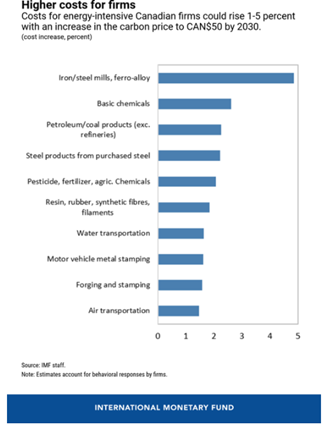Insights
Data and Analytics for Climate-related Financial Risks: Part 1
June 8, 2021
With the reality of climate change becoming more apparent with each passing year, companies across industries have started taking a long-term view of the sustainability of their operations. At the same time, ESG (environmental, social and governance) compliance is gaining traction, with regulators like the Canadian Securities Administrators (CSA) issuing guidance on the information that should be included in disclosure documents.
ESG is not just about social awareness. Climate-related risks are expected to have both direct and indirect impacts on the financial position and well-being of banks, households, corporates, and even countries. Recently, the BCBS launched detailed reports on climate-related risk drivers and how they translate into financial risks. However, so far, measurement of climate-related risks has remained in the early stages, primarily due to a lack of clean, complete data, and the inherent uncertainties about the pace of climate change and its impact on business, as well as nonlinearities in the underlying process. As the central link of the financial system, financial institutions need to account for the impact of climate change as part of their regular risk assessments, so they can adapt their business models and exposures to mitigate any drastic impact.
Recent BCBS reports and the OSFI consultative paper on climate-related risks outline two main types of risks that financial institutions need to take into account. These are:
- Physical risks – Floods, forest fires, heat waves, etc., which directly impact the worth of assets (such as by water damage to a residential property that has a mortgage on it), and
- Transitional risks – When ESG-related regulatory or technological change impacts clients’ revenues and their ability to pay back loans or diminishes the value of investments. For example, a recent Swiss Re report concluded that a carbon tax of $125 per tonne would cut earnings in the North American energy sector by 60%, which will have a significant adverse impact on their financing and funding.
Dealing with these risks presents a whole new set of challenges for financial institutions, mostly related to data and analytics. Some of the questions financial institutions have had in mind when it comes to climate-related risk assessment include:
- Where to get the data?
- How to ensure that the data is accurate and that exposure data from various sources is represented consistently?
- How to facilitate the exchange of exposure data between various entities, while ensuring transparency and consistency?
- Does the current set of 3rd party standard setters, aggregators, and providers of exposure data, such as CDP and PCAF fill their roles adequately?
- How to understand the impact of climate risk factors on financials?
- How to get clients to provide the necessary exposure data, without placing undue burden on them?
In this three-part series, we try to answer all these questions to help financial institutions find a suitable way forward for assessing and accounting for climate-related financial risks. Part 1 of our article series focuses on data sources and collection.
Data Collection for Climate-related Risks
Undoubtedly, one of the biggest challenges in addressing climate-related risks is the sourcing of the GHG emissions data and climate data for physical and transitional risks.
From the perspective of physical risks, the challenge may not be as formidable as it seems. The insurance industry has climate events-related data going back decades, if not centuries, and they even have mechanisms to exchange that data. In Canada, the Insurance Bureau of Canada (IBC) has been collecting claims data from member insurance companies for decades. The challenge, of course, would be to transition data between the insurance and banking pillars, so changes in regulation may be required to allow for the necessary data sharing. In the meantime, the data can be either anonymized or, if nothing else works, aggregated – it will still be useful in that way, as long as it can be tied to specific geolocations. The National Weather Service can also be another source of adverse climate event data, as they have decades-worth of data for raw events as well as the outputs from their models. To account for the unique challenge of extrapolating climate event data and the inherent uncertainty in basing future states on historical data, it is important that experts properly parameterize for uncertainty in their simulations so they can get the probabilistic state while having realistic outlier data for strategic planning purposes. It is also important to have periodic update cycles that will provide timely information and recalibration for ongoing planning requirements.
For transitional risks, however, there are no traditional data sources. Since the CDP and other 3rd party data providers are the preferred way of obtaining emissions data, this article is concerned with companies and individuals which do not provide their emission information to 3rd parties. Regulators propose that banks should collect emissions data from their borrowers and counterparties, but not all companies, especially not unlisted ones, produce such data today. The Partnership for Carbon Accounting Financials (PCAF) recommends that if scope 3 emissions data is not available from the borrower, it should be estimated using Option 2 ‘Physical activity-based emissions”. They argue that economic activity-based evaluation is not that precise. Be that as it may, the physical activity data is not easy to come by for unlisted companies, however, economic activity data, expressed in transactions, is always available with one financial institution or another. Banks have payments information about their clients – who they are paying and who pays them. Based on the payee or payer company name and address, banks can check D&B or similar industry databases for SIC codes and understand exposure to at-risk industries, for both their supply chain and their customer base. This may not be precise, as such industry-based analysis is quite biased, but it is cheap and will provide at least a more accurate range and valuable relative statistics. For households which are mortgage holders, the emissions can be obtained from bill payment transactions for various utilities. This method will also require a consensus on which industries are at-risk. This is where governments need to step in as they drive the degree of exposure of various industries by means of regulation. The best example of this would be the Canadian carbon tax and its impact on various industries.

The challenge then is for a bank to get hold of their borrowers’ transactional data representing economic activity (payables and receivables) when these borrowers are banking elsewhere. To solve for this issue, we recommend a combination of regulation, which should make it mandatory for borrowers to provide disclosure consent for that data, and open banking to facilitate the access. While in lieu of regulation, banks may want to consider issuing loans conditional on emissions disclosure by borrowers. Open Banking can help by eliminating the very need for the bank’s clients and vendors to calculate their own scope 2 and 3 emissions. Banks can, with their clients’ and vendors’ consent, request limited transactional information for their electricity and heating/cooling expenses, goods and services purchases, and other transactions related to fuel and energy related activities, transportation and distribution, business travel, waste treatment, asset lease payments, and investments, and calculate their emissions for them, as a value-added service.
Needless to say, financial institutions will need to add and securely manage new data sources for the calculation of climate-related risks. Additional data volumes may necessitate changes in the banks’ data estate architecture. Where data needs to be derived from the financial transactions of clients and vendors, appropriate data privacy and security mechanisms will need to be put in place and the data will need to be made accessible by BI tools and calculation and reporting engines. Merely having the data is not enough, and in the next chapter of this series, we will cover the measures and techniques financial institutions will need to incorporate to ensure that the climate-related data they use is valid, accurate, mastered, and can be securely shared.
As a leader in the data and analytics space, Zelusit helps customers appropriately manage their data in a manner that facilitates value extraction. We have over 20+ years of experience in the financial services sector and offer solutions for data management, regulatory compliance, front and back-end optimization, and much more.


